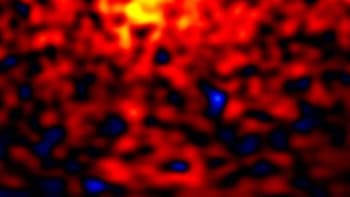Astronomers at Jodrell Bank Observatory in the UK have discovered a wobbling pulsar for the first time. Ingrid Stairs and co-workers from the University of Manchester detected the pulsar's wobble, or precession, after analysing 13 years' worth of data from the 76 metre Lovell Telescope. The team reports its findings this week (2000 Nature 406 484).

Pulsars are rotating neutron stars, and are the collapsed cores of supergiant stars that have exploded as supernovae. They are extremely dense, typically 20 km across but with masses a million times greater than the Earth. As a pulsar rotates, it sends beams of radio waves from its magnetic poles out across space, like a lighthouse. Radio telescopes receive a signature pulse as the beams sweep over the Earth. Astronomers can tell how fast a pulsar is spinning by examining the characteristics of these pulses. Most pulsars emit stable signals that steadily slow down, but the new find represents the first long-term highly periodic variation in a pulsar.
‘We were suspicious that something strange was happening after about six years ‘, Andrew Lyne, one of Stairs’ co-workers and head of the pulsar research group at Jodrell Bank, told PhysicsWeb. ‘But we needed 13 years of observation before we could be confident about what we were seeing. The long period of observation was chiefly because of the long period of the pattern, and we wanted to be sure that we were not observing some random effect or the result of planetary bodies orbiting the star’.
Ingrid Stairs and her colleagues believe that the variation in the pulses suggests the neutron star is not spherical, but very slightly squashed. ‘The bulge in the neutron star causes the angle between the pulsar’s rotation axis and its radio beam to change with time, creating the wobbling effect that we measure’, explains Stairs. The bulge is extremely small: the new pulsar departs from being a sphere by just 0.1 mm in 20 km.
But it is surprising that the wobble, similar to that of a spinning top, was detected at all. Previous observations from Jodrell Bank show that a pulsar consists of neutron superfluid encased in a solid crust. Astronomers believed that any precession would die out extremely quickly because of the interactions between the superfluid and the crust. ‘But this pulsar is one hundred thousand years old and it is still wobbling’ says Lyne. Theorists will now have to re-think current ideas to explain the unexpected precession.
‘We are now looking closely at a number of other interesting candidates in our database’, Lyne told PhysicsWeb, ‘and while we are making some progress, we may need to exercise a similar degree of patience.’




